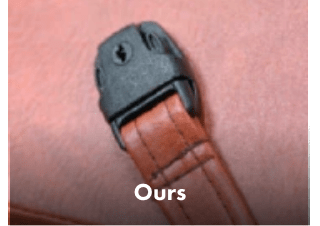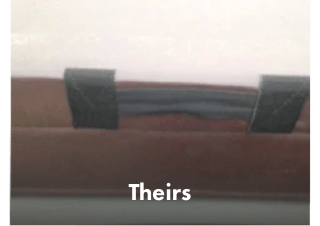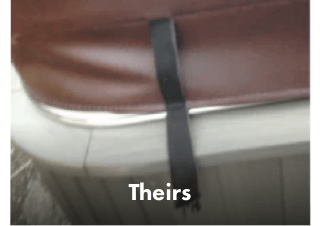How Long Does a Hot Tub Take to Heat Up?
Understanding how long your hot tub takes to heat up is essential for planning a relaxing soak. The time it takes depends on several factors, including the size of your tub, heater capacity, insulation, and weather conditions. In this guide, we’ll break down these factors, common issues that slow heating, and tips to speed up the process.
Factors Affecting Hot Tub Heating Time
1. Water Volume and Tub Size
-
Larger hot tubs hold more water, requiring more energy and time to reach the desired temperature.
-
Compact models heat faster due to less water volume.
2. Heater Power and Efficiency
-
A standard hot tub heats at 1.5°C to 2.5°C per hour. Some high-power heaters can heat at 8°F per hour.
-
Older or weaker heaters may take significantly longer.
3. Insulation and Cover Quality
-
A well-insulated tub retains heat better and speeds up warming.
-
A high-quality, insulated cover prevents heat loss and accelerates heating. Always keep the lid on unless you’re using the hot tub.
4. Ambient Temperature and Weather Conditions
-
Cold weather significantly slows heating, especially if the tub is outdoors.
-
Wind exposure can cool the surface water faster than the heater can warm it.
-
Humidity helps retain warmth, while dry air can cause quicker heat loss.
Why Is My Hot Tub Taking Too Long to Heat?
If your hot tub is taking longer than expected to warm up, consider these potential issues:
-
Incorrect settings: Some users accidentally leave the tub on “filter mode” instead of “heat mode.” Double-check your settings.
-
Dirty filters or clogged jets: Poor water circulation reduces heating efficiency.
-
Faulty heating element: An old or failing heater may not perform optimally.
-
Poor insulation: Worn-out covers or a lack of proper insulation will cause heat loss.
-
Extreme weather conditions: Cold temperatures and wind exposure can prolong heating time.
How to Reduce Hot Tub Heat-Up Time
Want to heat your hot tub faster? Try these tips:
-
Keep the lid on – An insulated cover traps heat and speeds up warming.
-
Use a high-power heater – If possible, upgrade to a 5.5kW or stronger heater.
-
Preheat the water – If safe, fill your tub with preheated water from your boiler.
-
Optimize placement – Keep your hot tub in a sheltered area to minimize heat loss.
-
Regular maintenance – Clean filters and check the heating element to ensure efficiency.
-
Avoid energy-saving mode – Some hot tubs have economy modes that heat more slowly to conserve power.
Does Tub Size and Water Volume Matter?
Yes! The more water in your tub, the longer it takes to heat:
-
Smaller hot tubs heat up faster due to less water volume.
-
Larger hot tubs require more time and energy to reach high temperatures.
If quick heating is a priority, choose a model with a powerful heater and good insulation.
How Does Weather Affect Hot Tub Heating?
Ambient temperature and weather play a major role in heat-up time:
-
Winter heating takes much longer due to heat loss from cold air.
-
Wind exposure can strip away surface heat, making insulation crucial.
-
Seasonal adjustments may be necessary—expect slower heating in winter months.
To speed up winter heating, keep your tub covered, use windbreaks, and ensure insulation is intact.
Final Thoughts
Heating a hot tub can take anywhere from 6 to 12 hours depending on its size, heater power, and external conditions. Regular maintenance, a well-fitted insulated cover, and an efficient heating system can significantly improve your hot tub’s performance.
For more expert tips and advice on hot tub care, explore our additional resources or reach out to a professional service provider.
Our Quality
It is easy for a website to claim they have the best quality but at MySpaCover we guarantee it. We utilize only the highest quality materials and the most sophisticated processes to offer the best covers available online. Here is how our covers compare to the competition:
MYSPACOVER

Our heavy-duty handles come standard and are double stitched using marine grade vinyl to ensure the highest durability and most attractive aesthetics.

Our standard straps are double stitched and are also produced with marine-grade vinyl.

We double stitch every seam and hinge to ensure your spa cover can be used for years to come.
Other Guys

Their cheap handles are more prone to wear and tear and are known to rip off within the first two years plus the appearance speaks for itself.

Our competition uses low-quality straps that are prone to breakage and often times do not match the color of the spa cover.

Their use of single stitching and exposed shells can ultimately cause cracking and heat loss, costing you more on your electric bill.
The Underside
The underside of a spa cover is often overlooked. However, this is the material that is in constant contact with high temperatures and the chemicals in your spa. The life of your spa cover depends on a high-quality spa underside. We don’t cut corners like the other guys so you can trust that our 6 mil plastic wrap is vapor sealed to the core and will keep the heat out.
MySpaCover utilizes an 11oz PVC coated poly that, after years of rigorous testing, has proven to be the best possible material to withstand constant high temperates and chemical exposure.
Beware of mesh bottoms used by competitors as this type of material is meant to cut costs and is prone to failure.